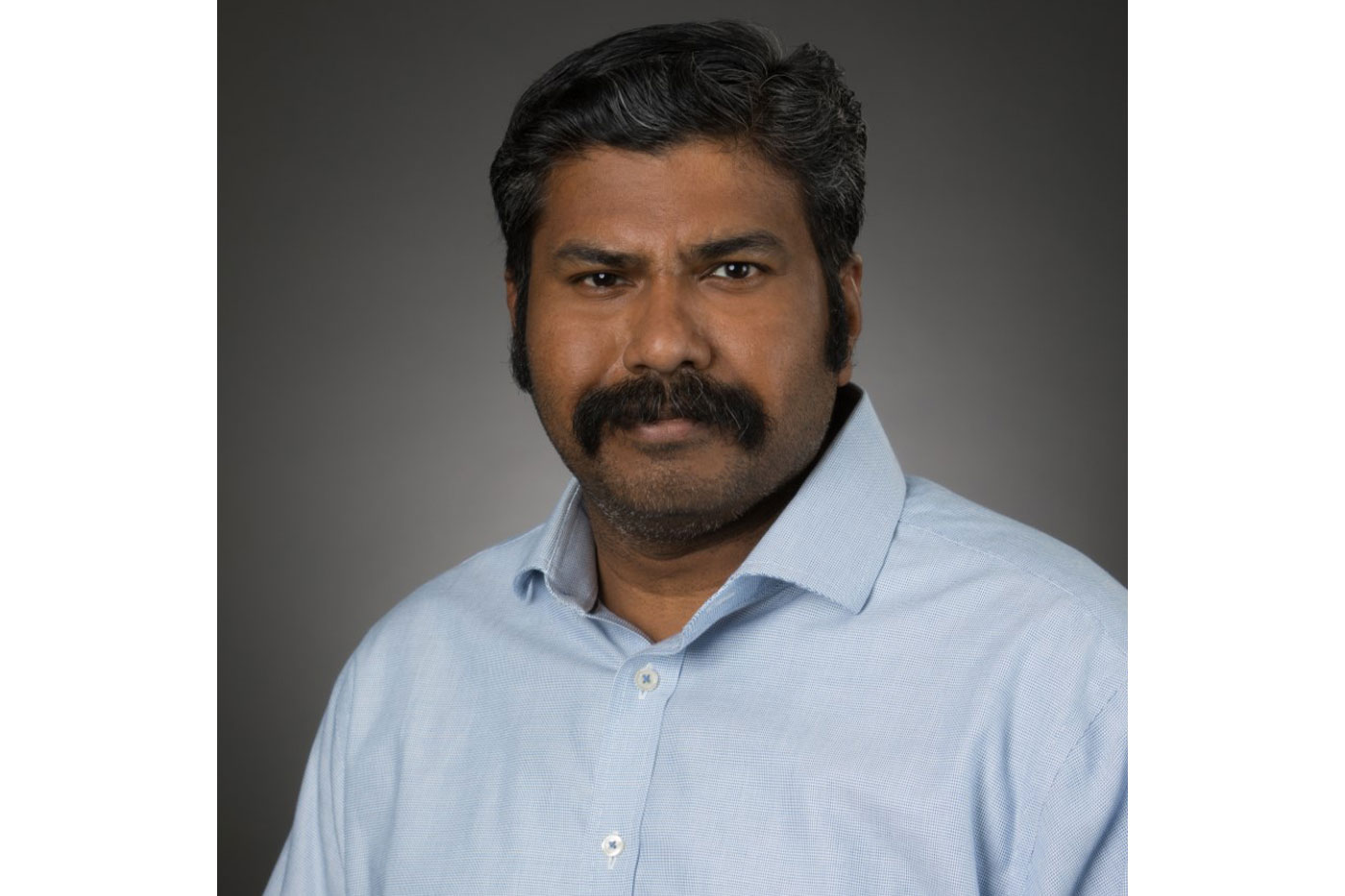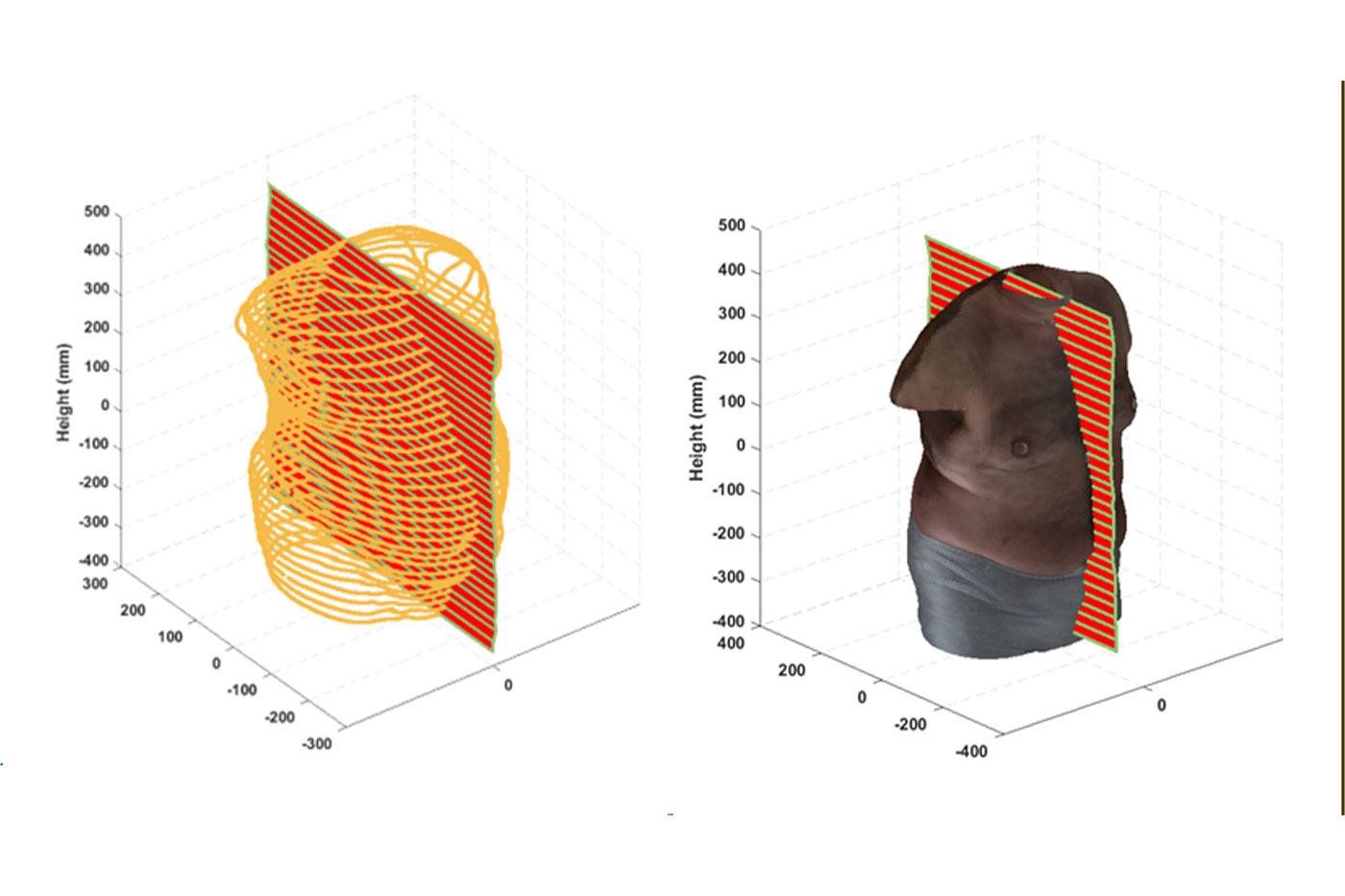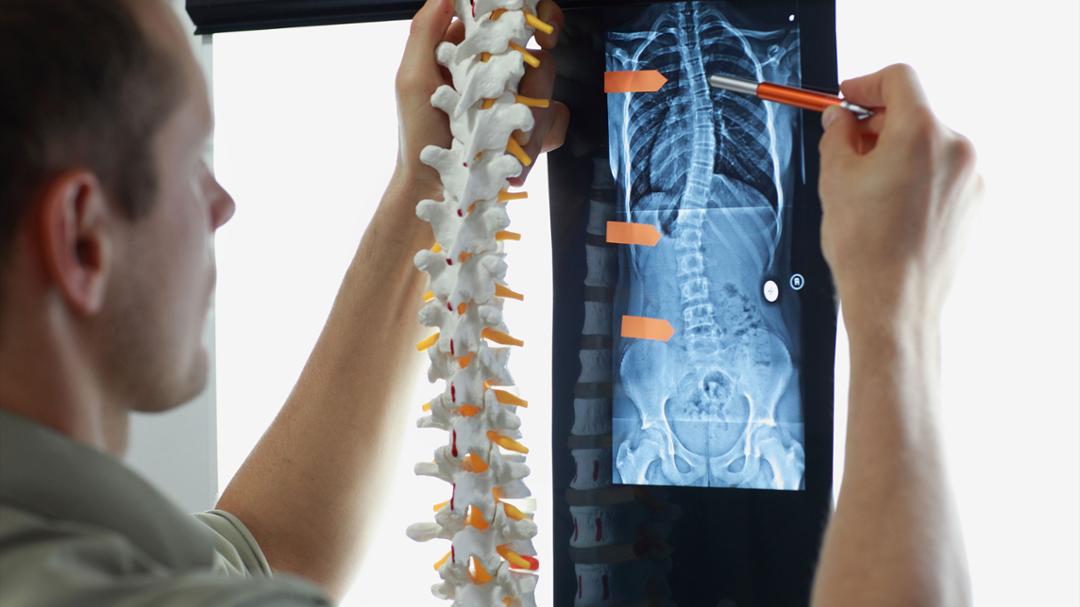Mahendran Balasubramanian uses 3D body scanning to develop braces that are not only more comfortable but can help monitor changes in the spine.
It is often wondered how the Apparel Design & Manufacturing fits into the College of Health & Human Sciences. Those curious need look no further than the work of Mahendran Balasubramanian, an assistant professor in the Department of Design.
When Balasubramanian joined the department in spring 2022, drawn to the opportunity to conduct cutting-edge research, he set up a 3D digital anthropometry lab that hosts advanced body scanner equipment among other tools. His project, titled “Integrating Technology and Clothing Systems to Address Human-Centric Needs of the Consumer,” uses 3D topographic imaging to develop braces for idiopathic scoliosis patients.
Balasubramanian explains scoliosis as a primary spinal deformation disorder that affects human symmetry. As he studied this condition, he discovered a few of his acquaintances were affected and shared common issues of limited treatment mechanisms and the use of braces that caused prolonged discomfort.

“Given my background in clothing science and apparel/textile, I wanted to study the anthropometrical changes in scoliosis patients and eventually design an improved brace capable of offering both therapeutic benefits and comfort to wear,” he explained.
Through 3D body scanning, Balasubramanian captures a human body’s surface topography, creating a full-scale 3D digital representation (also known as an avatar). Once the digital representation becomes available, it can be used for various purposes, including size, shape and volumetric analyses of the entire body or just a portion.
In the case of scoliosis patients, treatment effectiveness or a surgical procedure is evaluated using radiography (like X-rays) to monitor the changes in the spinal deformation. Using the 3D body scanning technology, Balasubramanian found progressive changes in torso deformation can be rapidly monitored without any radiation exposure.
Though the scan doesn’t provide internal images, Balasubramanian can computationally measure the surface topography as a proxy for the spine.

“Additionally, having a rich 3D representation of the human body can benefit the development of products such as braces or armors for people with various musculoskeletal disorders,” he said. “A product with better fit and comfort without compromising functionality will increase user acceptance, maximizing its purpose.”
Balasubramanian is in the process of forming a collaboration for this project with the Texas Tech University Health Sciences Center.
“Soon, we will have actual patients who can be scanned and studied,” he said. “The collaborators showed remarkable enthusiasm for the work.”
In a related project, Balasubramanian also uses this 3D technology to develop ballistic protection armor plates for officers in uniform. The approach is geared more toward ergonomically viable body armor rather than being light.
“The 3D scanning technology would help us understand the anthropometric profile of people in uniform so that the body armor can be improved for better fit, mobility and comfort,” he said. “This project could especially benefit female officers as their existing body armor has several areas with scope for improvement.”
Following his conversation with Lubbock police officers, Balasubramanian found there was a surge of interest in this research. He is working with female officers so he can collect the data needed to pursue next steps.
“The officers were eager to support the work and were happy that Texas Tech cared for them,” he said. “An industry collaboration might emerge through this project, and I have already received communications from a body armor company that might be interested in this. We plan to discuss this in the fall semester.”
Balasubramanian enjoys addressing real-time needs of people through his research, which not only provides him with a sense of satisfaction, but also meets his purpose.
“It feels very gratifying to know that I am contributing to improving the well-being of others,” he said. “Even if this work changes or supports the users to a slightest extent, I am fulfilling my duty as a responsible researcher and giving something back to the community.”

